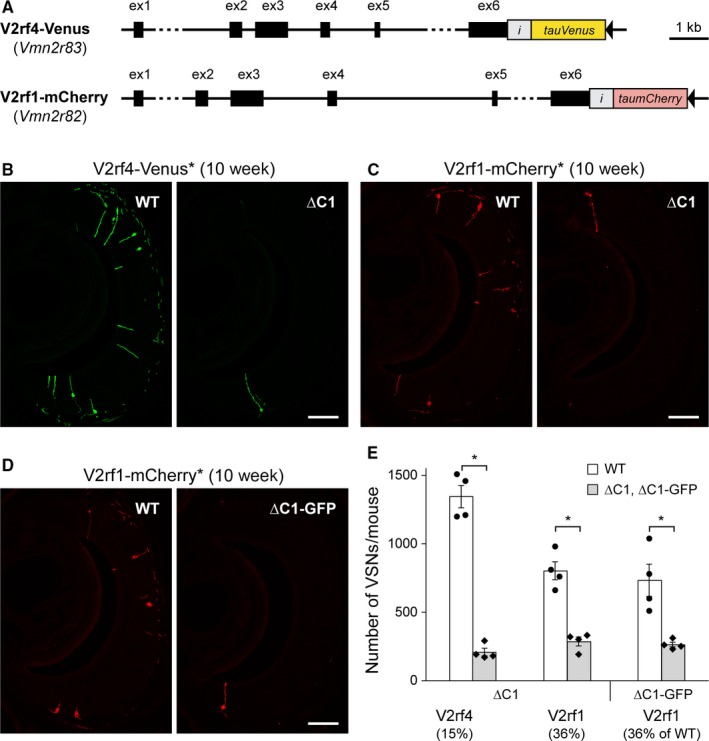Figure 3.

Decrease in the number of VSNs expressing V2rf4‐Venus or V2rf1‐mCherry in ∆C1 mice. (A) The V2rf4‐Venus and V2rf1‐mCherry gene‐targeted strains have an insertion of IRES‐tauVenus or IRES‐taumCherry after the stop codon of the Vmn2r83 or Vmn2r82 genes, respectively. The coding sequences remain intact. The black triangles indicate a loxP site. i, IRES. (B,C) The ∆C1 strain was crossed with the V2rf4‐Venus and V2rf1‐mCherry strains to generate double‐homozygous mice. Intrinsic fluorescence (indicated with an asterisk) of coronal VNO sections is shown in green (B) or red (C). Scale bar, 100 μm. (D) The ∆C1‐GFP strain was crossed with the V2rf1‐mCherry strain to generate double‐homozygous mice. Intrinsic fluorescence of coronal VNO sections is shown in red. Scale bar, 100 μm. (E) Summary of the numbers of labeled VSNs per mouse. Four 10‐week‐old male mice per genotype were analyzed for each cross. Error bars represent mean ± SEM, with data points superimposed on bar charts. Mann–Whitney test was performed: *P value < 0.05.
